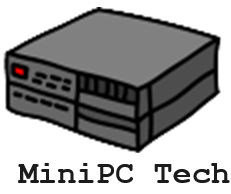Why You Need a NAS for Media Streaming in 2025
Imagine the convenience of having all your favorite movies, TV shows, and music in one place, accessible from any device at home. That’s the promise of a Network-Attached Storage (NAS) device. It’s a must-have for those of us seeking a seamless home media streaming experience. A NAS acts as a centralized storage hub, connected to your home network. That allows multiple devices to access and stream media files simultaneously.

Key Takeaways
- Seamless Streaming: NAS devices allow simultaneous access from multiple devices, enhancing your home media experience.
- Future-Proof Features: Look for NAS with upgradable specs and robust app ecosystems.
- Cost-Effective Control: Avoid subscription fees and enjoy full control over your media with a one-time NAS purchase.
- Data Protection: Choose NAS models that support RAID configurations for reliable data safety.
Note: there are affiliate links in this post. As an Amazon Affiliate, I might make a small commission on every sale. No extra cost to you, and it helps to support this channel.
The Importance of media streaming and home media servers
So, we are choosing the best NAS as a home media server. And why?
With the ever-increasing quality of digital media and the popularity of streaming services, our hunger for reliable, high-capacity home streaming solutions has soared. NAS devices offer the flexibility and scalability to meet this demand, providing a personal, always-on media server right in your living room. They transcend traditional storage roles, handling a variety of media formats and serving them up to your smart TVs, tablets, and other gadgets with ease.
But why a NAS over other storage or streaming options? Consider the limitations you often face with mainstream cloud-based services: recurring subscription fees, internet bandwidth dependency, and privacy concerns. A NAS sidesteps these issues, offering a one-time purchase with greater control over your digital entertainment. And as 2025 approaches, the features of NAS devices are advancing, aligning with our growing media libraries and the desire for more sophisticated home entertainment systems.
So, as we pivot towards the next section, let’s keep in mind the necessity of personalizing your media sanctuary. My goal is to help you navigate through the vast ocean of NAS options. We’ll explore together how understanding NAS and its pivotal role in your home can lead to selecting a system that not only meets your current needs but is also a robust cornerstone for future enjoyment.
Choosing the Best NAS for Your Needs
Understanding Network Attached Storage (NAS) and Its Role in Home Media Streaming
In my quest to help you carve out the ideal home entertainment setup, it’s essential I highlight how critical it is to choose the right Network Attached Storage, or NAS, for your media streaming aspirations. At first glance, picking a NAS might seem like navigating a labyrinth of technical specs, but it boils down to matching the capabilities of the unit with your personal entertainment demands.
Let’s decipher the role of a NAS. It’s not just a storage device; it’s the central hub where all your digital content lives, accessible across your home network. Whether you want to stream movies to your 4K TV or share photo albums on your phone, a NAS makes it happen smoothly and reliably.
Key Features to Consider When You Buy a NAS
Now, which features should capture your attention? Storage capacity and speed are paramount; consider how much space you’ll need for your current library and future content additions. Also, look for a NAS that supports RAID configuration for data protection. Connectivity options, like fast Ethernet or Wi-Fi, determine how quickly you can access and stream your media. The processor and RAM are also influential; they ensure responsive performance during intensive tasks like transcoding video formats on the fly.
The personal touch comes in when you align these features with your lifestyle. Are you a film enthusiast with an expansive collection of high-definition titles? A NAS with greater storage and a potent processor should top your list. Or perhaps you’re a family with diverse media needs? Opt for a NAS that offers multiple user accounts and parental controls. It’s about finding that sweet spot where the NAS meets your specific home media requirements.
With a clear understanding of NAS features tuned to your needs, you’re now on the right path to an informed selection. It’s a significant stride towards a truly personalized media haven—one that mirrors the uniqueness of your entertainment world.
One of the biggest headaches with a NAS is that the NAS vendor may not warranty the drives. I see one review on the Synology DS220+ that I first reviewed, and I had the same problem with a QNAP server. So it’s not the vendor. The moral of the story is to either buy a diskless server or be prepared to deal with the disk vendor directly. In that light, all of the NAS models I am reviewing are diskless.
Top NAS Models Reviewed for 2025
When it comes to choosing a NAS for your home, the market offers a spectacular array of options. In 2025, three brands have established themselves as leaders in the space: Synology, QNAP, and Asustor. Each of these brands brings a unique set of features and capabilities, positioning themselves as reliable choices for different user needs.
Overview of Leading NAS Brands
Synology stands out for its intuitive user interface and robust software ecosystem. If user experience is high on your list, a Synology NAS might be the perfect fit.
QNAP, on the other hand, is renowned for its performance and expandability, catering especially to those who require high processing power and storage capacity.
Asustor NAS models boast competitive specs with a focus on energy efficiency, making them ideal for the environmentally conscious consumer.
Best NAS Drive Options for Different Users: Two-Bay vs Larger NAS Boxes
When selecting between two-bay NAS devices and larger units with multiple drive bays, consider your current and future storage needs. Two-bay drives usually suffice for households with moderate media consumption, whereas larger NAS boxes can serve those anticipating extensive media libraries or more advanced use cases like full home surveillance systems.
In my review, I’ll delve into specific models from each brand that exemplify their strengths in 2025. For instance, the Synology DS224+ remains a top pick for those seeking a balance between performance and cost. I’ll also juxtapose it against QNAP’s TS-4464-8G, a four-bay model that excels in multitasking and offers a PCIe slot for additional upgrades. And the Astutor Lockestor that gives you more options to choose from.
Your choice of NAS should not solely be influenced by the current landscape. Understanding how these models compare will provide a clear perspective on what to expect in terms of upgrades, long-term performance, and potential shifts in the NAS market.
Review of Four NAS Options
GMKtec Nucbox G9 NAS Mini PC
Though not an appliance, when combined with software like OpenMediaServer, this little mini pc makes a great NAS for the price. For under $300 plus the cost of four 4 TB SSDs , it can be a great solution for a file server, home lab, or media server.
- MINI PC NAS HYBRID COMPUTER - The G9 mini pc is one of the first computers to incorporate 4x M.2 2280 PCIE slots so you are able to use NAS software with normal PC features. The G9 uses the latest...
- NAS STORAGE - Why do you want NAS? Because you can transform the pc into a massive storage network; Backup files, share photos, and stream videos. With the appropriate software (GMKtec does not...
- DUAL BOOT UBUNTU & WIN 11 PRO - The G9 mini pc desktop computer is pre-installed with Win 11 Pro (Default OS) and Ubuntu 24.10 Version (Linux Software must be 24.10 Ver. or Higher). The Ubuntu OS is...
It has a Intel Twin Lake N150 CPU which is not a barn burner at 3.6 Ghz. But the dual 2.5 Gb NICs can make it a great solution. Also it can double as a workstation, with support for triple 4K displays, dual Ubuntu and windows boot capabilities, and 3 USB 3.2 ports. It does not support RAID out of the box, but it is possible to do so with hardware limitations.
Synology DS224+ Server
This two-bay server comes in 6 varieties, from 4 TB to 36 TB. We are going to review the 4 TB, but all have the same specs otherwise.
- Centralized Data Storage - Consolidate all your data for complete data ownership and multi-platform access
- Sharing and Syncing Across Systems - Access, share, and sync data across different systems and devices using intuitive controls
- Powerful Backup and Restoration - Back up and restore critical devices and data using a host of intuitive backup tools
It comes with a dual-core 2 GHz CPU with up to 2.9 GHz bursts. Not a great gaming computer, but you’re not buying it for that. It also comes with 6 GB RAM and dual GB LAN ports. The latter is the most important spec in my opinion. You want to be able to stream quickly to multiple devices. Multiple networks allow you to do that.
It also comes with 2 fast USB 3.2 ports. What are USB ports for on a NAS? Simple. You can transfer files quicker that way when you have them on a portable storage device.
QNAP TS-464-8G Server
The QNAP TS-464-8G server is a 4 bay diskless NAS server. There are 2, 3, 4, and 6 bay options. You can also buy it with 4 TB Seagate or WD disks which gives you 12 TB pre-configured RAID server.
- Quad-core Intel Celeron N5105/N5095 4-core/4-thread burst up to 2.9 GHz with 8GB DDR4 RAM
- Dual 2.5GbE (2.5G/1G/100M) ports accelerates file sharing across teams and devices or streamline large file transfers
- Dual M.2 PCIe Gen3x2 NVMe SSD slots enable cache acceleration or SSD storage pools for improved performance
The processor in this is a quad-core N5105 with burst speed to 2.9 GHz. It has 8GB RAM. It has dual 2.5 GB ethernet connections and multiple (it doesn’t say how many) USB connections with up to 10 GB/s transfer speed. So you could add another RAID server via USB drives to mirror the local one.
QNAP also has a cloud service to backup your data called MyQNAPCloud for a relatively small fee. This is a feature that the other two brands do not offer.
Asustor Lockerstor 4 Gen 2 AS6704T Server
This is available as a 2, 4, 6, 8, and 10 server. We are reviewing the 4 bay server.
- CPU: Intel Celeron N5105 Quad-Core 2.0GHz (burst up 2.90 GHz)
- Memory: 4GB DDR4-2933 SO-DIMM (Expandable. max. 16GB)
- M.2 Drive Slots: 4
It comes with the quad N5105 CPU rated at the same 2.0 GHz with a burst speed of 2.9 Ghz . It also has the dual ethernet ports at 2.5 gbps, but it is upgradable to 10gbps Ethernet. It has 4GB of RAM that is upgradable to 16 GB.
It has two USB 3.2 ports for connections to external drives.
So what distinguishes this from the first two is the upgradability.
Setting Up Your NAS for Optimal Performance
I’ve come across too many stories of frustrating evenings spent trying to troubleshoot a NAS setup that should have been straightforward. It doesn’t have to be this way. A properly set up NAS can feel almost magical in its efficiency, providing lightning-fast access to all your media at the click of a button. Here’s how to get there.
Installing and Configuring Your NAS Box
Firstly, ensure that you’ve selected the right hard drives for your NAS. Not all drives are built the same, and some are specifically designed for the constant demands of a NAS environment. Look for drives labeled as ‘NAS’ drives; these typically offer higher durability and performance for continuous operation.
Installing your drives into the NAS is usually quite intuitive. Most NAS systems come with a user-friendly interface that guides you through the initial setup. Be sure to use strong passwords, update to the latest firmware, and configure network settings according to your home network’s requirements.
Next, you’ll want to consider the RAID configuration, which affects how your data is stored across the hard drives. RAID 1 mirrors your data, providing redundancy, while RAID 5 and 6 offer a balance between storage capacity and data protection. Make your choice based on how critical your data is. Note that if you opt for a non-diskless model, it may come already preconfigured with RAID.
Good practice also involves setting up user accounts for each family member. This way, you can manage access levels, ensuring that your kids don’t accidentally delete your important files or stumble upon your private collection of documentaries.
Advanced Setup: Making Your NAS Stream Ready
Finally, consider your network environment. For the best streaming performance, connect your NAS directly to your router or switch using Ethernet. This typically provides faster speeds and more reliable connections than Wi-Fi. If possible, use a Gigabit Ethernet connection, as this will ensure plenty of bandwidth for streaming high-definition media.
With these steps concluded, your NAS will be a robust foundation for your home media empire. Your movies, music, and photos are now ready to be streamed to any device in your home—but why stop at just streaming? Next, we’ll look at how complementing your NAS setup with the right media services can transform your media streaming from functional to exceptional.
Enhancing Your Streaming Experience with Compatible NAS Models
Media Server Capabilities of Synology, QNAP and Asustor
Once you have your NAS set up, the next exciting step is bridging it with media services to get that exquisite streaming delivery. Home entertainment is rapidly transforming, and NAS devices are the unsung heroes in this revolution. They offer more than just storage; they are the nerve center of your digital media world.
Understanding the media server functionality of your NAS is critical to experience seamless streaming. Synology, QNAP, and Asustor are leading the charge with built-in media server capabilities like Plex, which transcends ordinary streaming with features like personalized libraries, file transcoding, and multi-device streaming.
But why stop at Plex? Other compatible services can also elevate your media experience. Your NAS can integrate with a variety of streaming applications and is often extensible with third-party or open-source software that adds even more value to your media server.
Choosing a NAS with Future-proof Technology
When choosing a NAS, consider one that is future-proof. With technology rapidly evolving, protocols and hardware that are considered cutting-edge today may be obsolete tomorrow. A NAS that supports updates and has a robust ecosystem of apps can evolve along with the technology, offering investment protection.
As you head into the NAS market of 2026, think long term. NAS models that come equipped with advanced features like 10GbE ports, expandable RAM, and processor capability for efficient transcoding are poised to handle next-gen streaming needs. It’s not just about the features; it’s also about ensuring longevity and adaptability.
NAS Buying Tips: Ensuring Long-Term Satisfaction
When I set out to buy a NAS, it’s crucial I look beyond the sales pitch to what really counts. After all, it’s an investment that should serve me well for a good number of years. So, what should I zero in on?
What to Look for in a NAS Drive in 2025
In 2025, a key feature I need to prioritize is storage scalability. Media collections grow, and so should my storage space, without the hassle of buying a new unit. Also, speed becomes even more relevant with 4K – and soon 8K – content becoming mainstream. Therefore, I ensure the NAS I choose supports high data transfer rates.
Another must-have is robust data protection. I need peace of mind knowing my data is safe from hardware failures and security breaches. So, RAID configurations and strong encryption are on my list.
Where to Buy a NAS and Get the Best Deals
Traditionally, tech stores and online marketplaces are the go-to options. However, in 2025, direct purchases from manufacturers or specialized retailers might offer more personalized pre-sale and after-sale support, not to mention potential warranty benefits.
As I approach the purchase, I consider the support community and ecosystem around the NAS brand. Synology, QNAP, and Asustor, for example, boast vibrant user forums and extensive app libraries. These are indicators of a commitment to customer satisfaction and continuous product improvement.
I don’t overlook the importance of reviews. Expert and consumer reviews are invaluable for providing real-world insights. They often highlight strengths and weaknesses that aren’t apparent in product specifications alone.
With these pointers in mind, I’m equipped to make a NAS purchase that aligns with both my immediate needs and my long-term home media goals. It’s not just about what’s shiny and new; it’s about what reliably serves its purpose and remains adaptable to the changes that the coming years will bring.
Preparing for the Future of Home Media Servers
As we approach the sunset of this guide, it’s vital to recognize the sustained importance of NAS in our media-rich world. These powerful devices aren’t just for today; they’re an investment in your digital future. With the media landscape continually evolving, a NAS can adapt alongside the trends, serving up the latest in entertainment without skipping a beat.
Your choice of a NAS should go beyond immediate needs. Consider long-term trends in technology and media consumption when making your selection. It’s about finding a balance between present requirements and future capabilities. Let’s ensure that the NAS you bring home today continues to deliver joy, convenience, and unmatched utility for years to come.
In essence, equipping yourself with the right NAS for media streaming is akin to setting the stage for a future where access to digital content is limitless and seamlessly integrated into daily life. The correct NAS will be your faithful ally in this journey, able to evolve with software updates and expand with your growing media collection.
Keep abreast of the latest developments in NAS technology. Stay connected with online communities, follow tech blogs, and, when the time is right, be ready to upgrade to keep pace with innovations. Your foresight now will lead to a smoother transition as you usher in the new era of home media servers.
Revisiting the outset of this guide, I emphasized the role of NAS for media streaming in 2025. As your understanding has deepened, may this guide serve as a foundation for your decisions. It’s up to you to harness the potential of NAS, crafting a home media environment that’s not only functional but truly remarkable.
Frequently Asked Questions
What is a NAS and why do I need one for media streaming?
A NAS (Network Attached Storage) is a device that provides centralized storage accessible over a network. It’s ideal for media streaming as it allows multiple devices to access and stream files seamlessly from a single location.
What features should I look for in a NAS for home media use?
Important features include large storage capacity, support for RAID configurations, fast network connectivity, and the ability to handle simultaneous streams to various devices.
How does a NAS differ from cloud storage for media streaming?
Unlike cloud storage, a NAS is physically located in your home, offering faster access speeds, no recurring fees, and greater privacy and control over your media.
Can I use a NAS for backing up other data besides media?
Absolutely. In addition to storing and streaming media, a NAS can back up files from multiple computers on your network, safeguarding against data loss.
Is it difficult to set up a NAS at home?
Setting up a NAS is generally straightforward. Most devices come with user-friendly interfaces that guide you through the initial configuration and network settings.
What is RAID and why is it important for a NAS?
RAID (Redundant Array of Independent Disks) is a data storage technology that improves data reliability and increases performance. For NAS systems, RAID is crucial as it provides data redundancy, protecting against data loss in case of a drive failure.

I am a retired software engineer with experience in a multitude of areas including managing AWS and VMWare development environments. I bought a relative a mini-PC a year ago and have become passionate about the technology and its potential to change how we deploy software.





